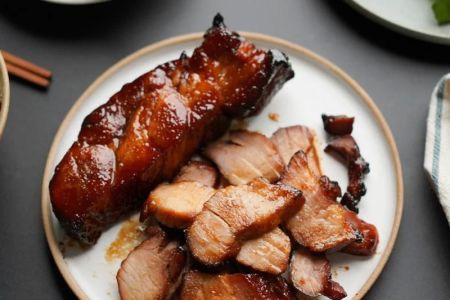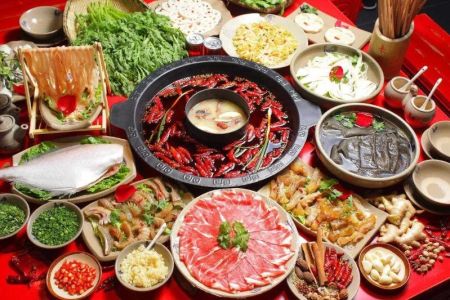How to Open a Chinese Restaurant in the U.S. and Succeed
If you've ever dreamed of opening your own restaurant, specifically a Chinese restaurant, you're in the right place. Starting a Chinese restaurant can be an exciting and profitable venture, especially in the diverse and multicultural landscape of the United States. With the growing popularity of Chinese cuisine, the demand for authentic and delicious Chinese food has never been higher. Let me walk you through the essential steps to take and offer some insights from my personal experience on how to open a successful Chinese restaurant in the U.S.
1. Research the Market and Your Audience
The first thing I learned when starting my restaurant was the importance of understanding the market. Each city and region in the U.S. has a different appetite for Chinese food. In areas with a high Asian population, your competition may be fierce, but your customer base is likely to be familiar with authentic dishes. On the other hand, in neighborhoods with fewer Asian residents, the demand for Chinese food might be less, but there’s an opportunity to introduce them to something new and exciting.
Start by researching the types of Chinese food that are popular in your area. Are customers looking for traditional Cantonese cuisine, or do they prefer the Americanized Chinese food options like General Tso's chicken and sweet and sour pork? This research will help shape your restaurant’s menu and offerings. I learned this firsthand when I initially launched my restaurant with a mix of classic and Americanized Chinese dishes, only to find that customers responded more favorably to one style over the other.
2. Create a Solid Business Plan
Once you’ve done your research, it's time to create a detailed business plan. A business plan serves as your blueprint for success. This document will not only help you secure financing, but it will also guide your operations and provide you with a clear understanding of your goals and vision. Your business plan should include the following elements:
- Executive Summary: A brief overview of your restaurant concept, target market, and mission.
- Market Analysis: Information about your competition, customer demographics, and industry trends.
- Menu and Pricing: A detailed list of your proposed dishes, their ingredients, and pricing structure.
- Operations Plan: A breakdown of how the restaurant will function, including staffing, suppliers, and day-to-day processes.
- Marketing Strategy: How you will promote your restaurant and attract customers.
- Financial Projections: Expected income, expenses, and profitability over the next 3-5 years.
When I first opened my restaurant, I didn’t have a business plan, and it created numerous challenges. However, after seeking guidance from a business consultant, I quickly realized the importance of laying everything out in writing and following through with the plan. It kept me focused and helped me avoid many of the common pitfalls new restaurant owners face.
3. Find the Perfect Location
Location, location, location. This phrase is the backbone of real estate and is especially true when it comes to restaurants. Finding the right location for your Chinese restaurant is crucial to its success. Consider foot traffic, proximity to other dining options, parking availability, and overall neighborhood vibe. You need a place that aligns with your target audience, whether it's a bustling downtown area or a suburban shopping center.
During my search for a location, I made the mistake of overlooking the importance of visibility. I initially rented a location tucked away in the back of a shopping plaza. While the rent was affordable, the lack of foot traffic and visibility significantly affected the number of customers I could attract. Eventually, I moved to a more visible location, which led to a noticeable uptick in business.
4. Hiring and Training the Right Staff
Your staff will play a crucial role in the success of your restaurant. From chefs to waitstaff, each team member is responsible for ensuring that customers have a memorable experience. When hiring staff for my Chinese restaurant, I quickly realized that experience in Chinese cuisine is essential. Chinese dishes often require specific techniques, and it was important for me to hire chefs who were well-versed in these methods.
In addition to experienced chefs, hiring friendly and efficient waitstaff is key. They should not only be knowledgeable about the menu but also able to provide great customer service, which can significantly impact your restaurant’s reputation. In my case, I invested in extensive training for my team to make sure they knew the ins and outs of Chinese cuisine and customer service. This paid off in the long run as it helped us stand out in a crowded market.
5. Menu Development and Sourcing Ingredients
One of the most important aspects of opening a Chinese restaurant is developing a menu that stands out while remaining authentic. Chinese cuisine is incredibly diverse, and there are many regional specialties that can cater to different tastes. When I developed my restaurant's menu, I decided to focus on Cantonese and Sichuan dishes, which I felt would appeal to a broad audience. I also made sure to include some popular American-Chinese dishes to attract a wide range of customers.
Sourcing high-quality ingredients is another critical aspect of menu development. I worked with trusted suppliers to ensure I had access to fresh produce, meats, and specialty ingredients like soy sauce, sesame oil, and spices that are essential for authentic Chinese cooking. In the beginning, I struggled with finding reliable suppliers, but once I established strong relationships with a few local vendors, the quality of my dishes improved significantly, and so did customer satisfaction.
6. Marketing and Building a Customer Base
Marketing your Chinese restaurant effectively is crucial for attracting customers, especially in the beginning. When I opened my restaurant, I focused on both traditional marketing methods and digital strategies to build awareness. I created a website, which included a full menu, hours of operation, and an online ordering system. I also took advantage of social media platforms like Instagram and Facebook to showcase my dishes and engage with potential customers.
One thing that worked particularly well for me was hosting food-tasting events and offering promotions like “Buy One, Get One Free” for new customers. These events gave people a chance to try my food without a significant commitment, and word-of-mouth helped spread the word about my restaurant. Over time, I built a loyal customer base that returned not only for the food but also for the great experience I was providing.
7. Overcoming Challenges and Staying Persistent
Opening and running a Chinese restaurant isn’t without its challenges. In the first few months, I faced issues with inventory management, employee turnover, and fluctuating customer demand. However, I stayed persistent and continued to learn from each challenge. I started tracking my sales and inventory more carefully, introduced employee incentives to reduce turnover, and refined my marketing strategies.
Eventually, things started to fall into place. My restaurant gained traction, and I saw consistent growth. Today, my restaurant is a well-established name in the local community. But it took a lot of hard work, persistence, and learning from mistakes along the way.






![Top Chinese Restaurants for Authentic Cantonese Cuisine in [Your City]](https://img.gochinarose.com/d33/2507/4157910400_450x300.webp)
